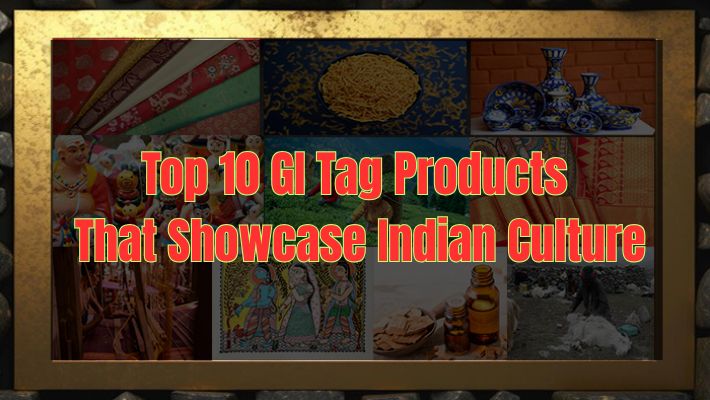
India has a rich tapestry of traditions, craftsmanship, and regional specialties, serving as a reservoir of culture. GI tags are one of the most meaningful ways of acknowledging and preserving this diversity. A GI tag comes under intellectual property rights, providing a centered association between a product and its geographical origin concerning qualities inherent to such location-climate, soil, tradition, method of production, etc. Thus, these GI Tagged Products in India preserve the support of the craft persons or the producers and celebrate the local heritage of the country.
These various GI Tag Products from handwoven fabrics, aromatic teas, and bright crafts, tell stories of communities, heritages, and age-old skills handed down through generations. These products embody culture-wielding language to express the values, identity, and creativity of an area in India.
In this article, we explore 10 Iconic GI-tagged products that are not only extraordinarily unique but are also culturally important throughout the Indian subcontinent.
Kanjeevaram Silk Sarees (Tamil Nadu)
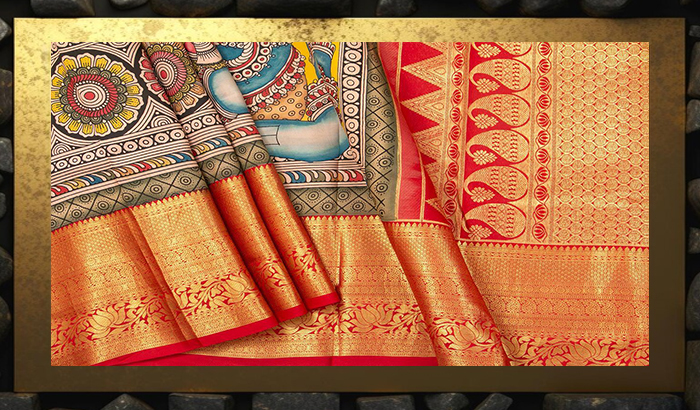
Known for their conspicuous colors, thick silk, and gold zari work, Kanjeevaram sarees mark the epitome of South Indian craftsmanship. Produced in Kanchipuram, these sarees are traditionally worn for weddings and auspicious occasions. Recognized under the Geographical Indications in India, Kanjeevaram sarees carry the aura of wealth, elegance, and charm.
They take several days, the weaving traditions being hundreds of years old.
Darjeeling Tea (West Bengal)

Often known as the “Champagne of Teas,” this was the first Indian product to be given a GI tag. Grown in the foothills of the Himalayas for its unique aroma and film colour with complex flavour, it is more of a colonial legacy of India and an India-wide continuation of expertise in tea cultivation.
Pashmina Wool (Jammu & Kashmir)
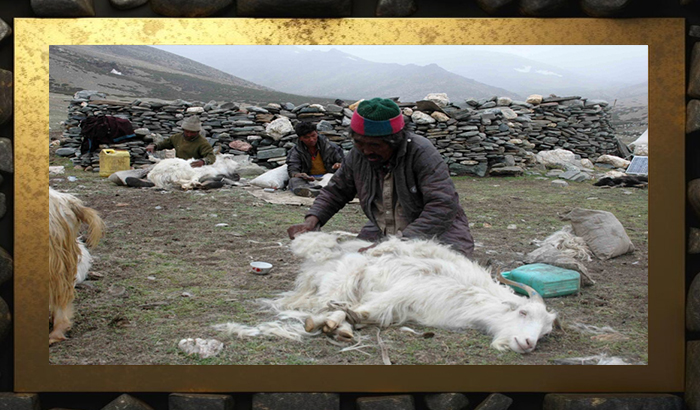
Worldwide, believed to be soft and warm, Pashmina wool is hand-spun out of the thin and soft undercoat of the Changthangi goat living in the Himalayan region. There are many tedious manual processes, and months are required to finish a Pashmina shawl; hence, it is regarded as an emblem of luxury and the most valued traditional Indian handicrafts.
Madhubani Paintings (Bihar)
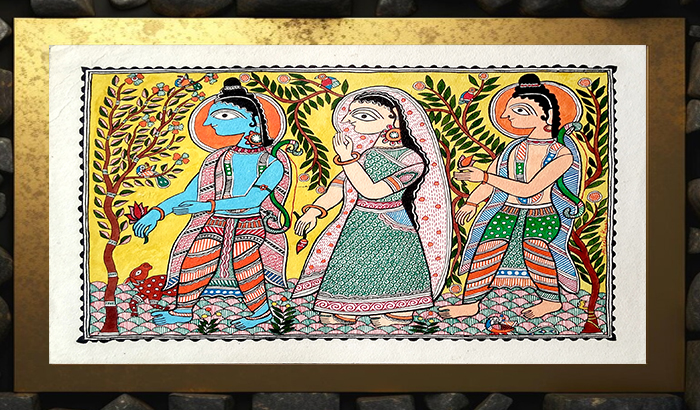
One of the highly celebrated folk-art forms of India, most of the Madhubani paintings are done by women in the Mithila region with the use of floral and geometric patterns. As a prime example of Indian Handmade Items, it is done with natural dyes and paints. The art done in rural Bihar is done considering the deep connection with their social life of rituals and festivals.
Kasaragod Sarees (Kerala)
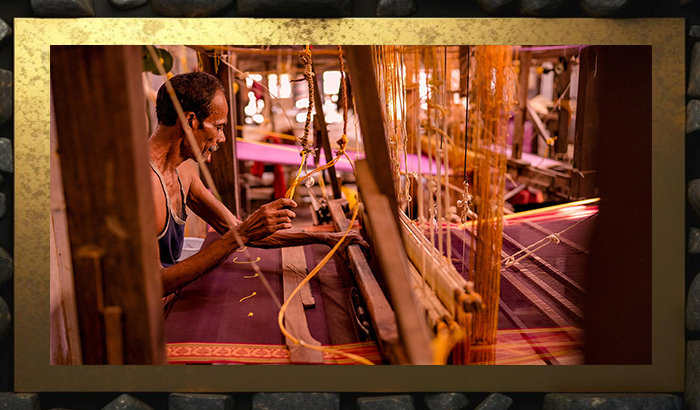
Simplicity finds perfection in the Kasaragod sarees from Northern Kerala. When blended with cotton and silk, the traditional looms create masterpieces of comfort and unfading grace, making these sarees a go-to in temples and ideal for family functions.
Mysore Sandalwood Oil (Karnataka)

Mysore sandalwood oil is extracted from the Santalum album tree and is prized for its healing benefits as well as its scent. This oil is an example of Karnatak’s history in perfumery and Ayurvedic medicine. Its use in spiritual ceremonies further illustrates the oil’s reverence among people.
Blue Pottery of Jaipur (Rajasthan)
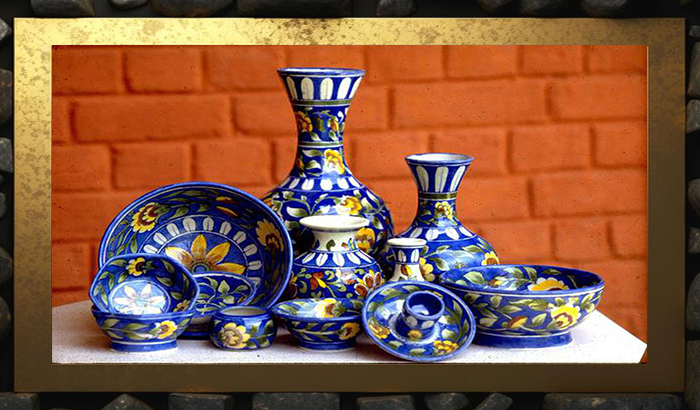
Differently from traditional clay pottery, Jaipur’s blue pottery is made using quartz and is distinctive for its brilliant cobalt blue shade. This art form, which has Persian roots, further blossomed under royal patronage and is now a symbol of Rajasthani art. The motifs posted usually consist of floral and animal imagery and geometric designs.
Channapatna Toys (Karnataka)
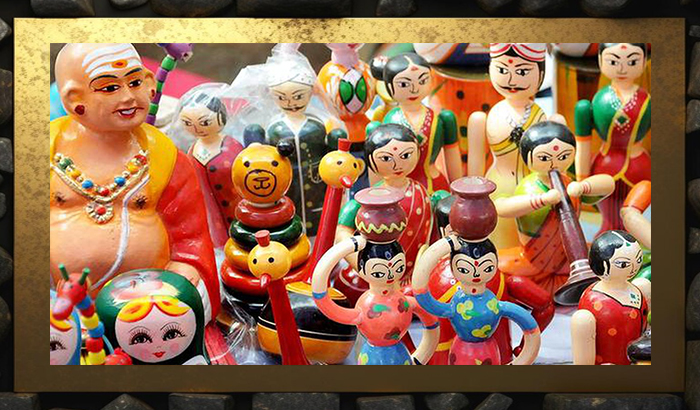
Channapatna is fondly called the Toy Town of India because it manufactures eco-friendly wooden dolls and toys. Their craftsmanship involves a centuries-old technique of lacquerware, one of the traditional Indian Art Forms, which uses vibrant dyes from vegetables. Apart from being enjoyable tokens, the toys testify to the Indian emphasis on sustainable, handmade products.
Banarasi Brocade Sarees (Uttar Pradesh)
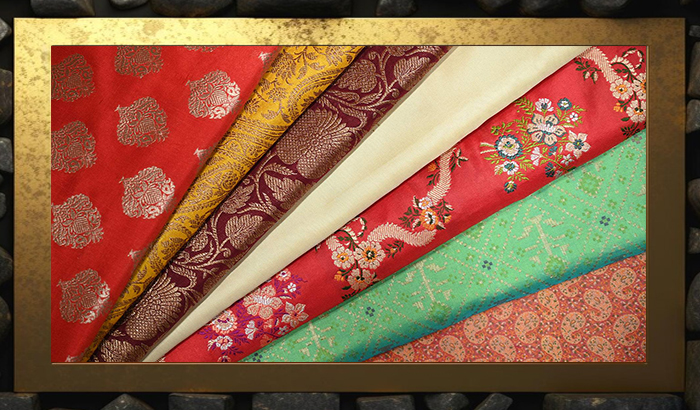
Banarasi sarees are one of the most exquisite traditional sarees in India, crafted with intricate patterns of gold and silver. The Mughal-inspired designs in the saree's rich look, along with its motifs, made it a royal possession. Banarasi sarees are a cultural sign of pride and are a must-have bridal garment.
Bikaneri Bhujia (Rajasthan)
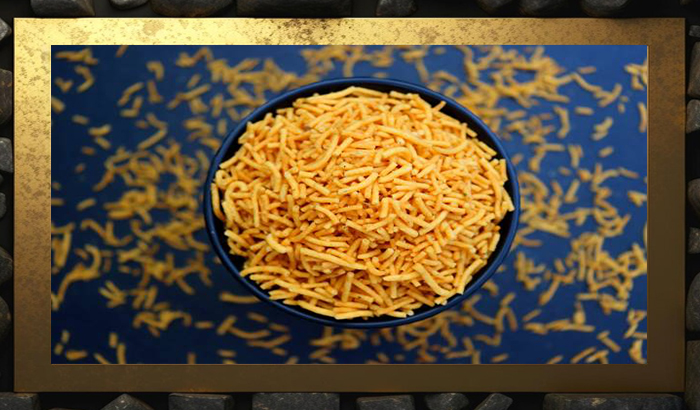
When it comes to culinary delights, Bikaneri Bhujia wins as a spicy snack made from moth beans, besan, and a range of local spices. It originated in the Bikaner princely estate and has turned into a household favorite globally. The GI-tagged snack is known for its creativity in Rajasthani cuisine, which uses dry local spices suited for its hot climate.
Why do GI Tags Matter in Culture Preservation?
GI tags are more than mere legal identifiers; they are tools of culture preservation and economic development. They assist rural artisans, farmers, and craftspeople to gain appreciation and fair value for the traditional skills and heritage products of India. Each time a consumer purchases a GI-tagged item, they consume a very good product and simultaneously contribute to the heritage and livelihoods of the people from that region.
Moreover, GI tags help in the promotion of tourism as well as regional identity. Kanchipuram, Darjeeling, and Varanasi have become names that are frequented by tourists and connoisseurs, as the places are known for their flagship products. This recognition helps maintain regional pride, therefore stimulating the incentive to pass such knowledge to the younger generation.
Conclusion
In conclusion, more than economic commodities, India’s GI-tagged products are true, enduring markers of our civilization. From the delicate silk of a Banarasi saree to the striking brushwork of Madhubani painting, each of these products represents an integral part of the rich tapestry that is India. In an age where consumers seek real connection and ancestry, GI tags serve as a powerful blend of the dignity of the nation’s cultural civilization.
Every region in India narrates a saga through its traditional crafts, cuisines, and art, and by nurturing these GI-tagged products, we nurture India in essence.







